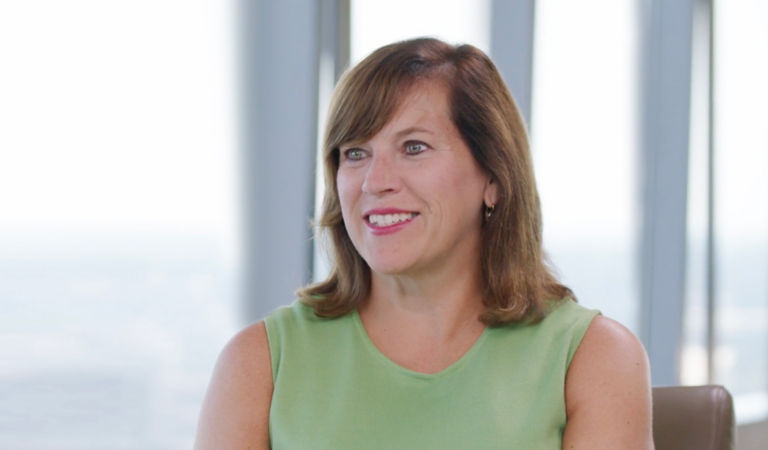It has been nearly a century since Wellington’s founders began to establish the principles and values that still guide our firm today. Each is important, but in my estimation, the paramount legacy of our founders was keeping the client at the center of all we do — “Client, Firm, Self,” as we often put it.
This is a commitment that has guided every decision we have made as our firm has grown over time: When our clients’ needs change, we adapt and evolve to meet them. That was the case in the 1960s, when we began investing and serving clients outside the US; in the 1970s, when we took the firm private to be better aligned with our clients’ interests; in the 1990s, when we launched our first hedge fund; in the 2000s, when we built out our fixed income capabilities; and in the 2010s, when we launched our first private equity strategy.
Today, as we look ahead to a second century of serving clients and their beneficiaries, we have reached another evolutionary step in the firm’s path — building for the future of active management. I would like to share some thoughts on what’s driving the need for change, how we’re implementing and accelerating that change, and what comes next.
Asset management expectations are shifting
This past year, I’ve had the great pleasure of meeting with clients around the world — in London, Dubai, Sydney, Hong Kong, Chicago, and many points in between. I’ve heard firsthand about their goals and challenges. What they need and expect from their asset managers is changing and, in many ways, reshaping the asset management landscape:
- Asset allocation adjustments — Asset owners are continuing to focus their use of active management where they see the greatest potential for alpha. For example, demand for higher-alpha fundamental strategies, private investments, and hedge funds is high and rising. Industry-wide, alternatives AUM is expected to grow at 10% per year through 2029, according to Preqin data.
- Blurring lines between public and private markets — Twenty years ago, public companies outnumbered private companies by about five to one. Today, there are more than twice as many private companies as public ones. It’s one of many signs that asset owners may need to look at public and private markets more holistically — as an integrated “ecosystem” of investment opportunities. It’s evident in fixed income too, where regulatory constraints have driven lending away from banks and spurred tremendous growth in the private credit market. In areas like investment-grade credit, asset owners are increasingly looking for help bringing together the best investment ideas from across public and private markets.
- A focus on solutions — Driven by their unique return, risk, and cost goals, some asset owners are looking to work more deeply with a smaller number of managers who can offer advice, thought partnership, solutions, and support across a broad range of investment capabilities and asset classes.
- The expanding needs of the global wealth channel — Many clients I spoke with this past year were thinking about solutions for the global wealth channel, as pension systems around the world move to self-directed defined contribution schemes and private individuals grow their assets. Within wealth, for example, there is a focus on increasing exposure to alternatives, as asset owners are significantly underallocated to these assets relative to other long-term-oriented investors.
- Technological innovation — AI and other technological advancements are fundamentally altering the asset management industry, creating opportunities to improve investment idea generation, portfolio construction, risk management, and client engagement.
Many of these trends have been underway for years, but they are clearly accelerating and will continue to do so in the coming years. We think this points to a very different and exciting future for active management — and we believe the firms that proactively adapt their capabilities for it today will be best equipped to help clients pursue their goals.
How we’re preparing
We are investing in our capabilities and aligning our organization and talent with clients’ shifting needs. We are also continuing to build the infrastructure, technology, and processes we need to scale our work and benefit from being a large global asset manager with capabilities across all asset classes. And we are approaching all this change with the same mindset that has guided our previous periods of evolution: We have to “go our own way” — not trying to imitate others, but rather leaning into our own distinctive strengths.
Let me highlight some of the key developments underway:
- Public equity and fixed income — The bar for active management is rising and we are supporting our investors in numerous ways to ensure they are well-positioned to generate attractive returns for clients. We are providing even more coaching and training to reinforce essential skills for risk-taking and leading investment teams. We are building out an Investment Excellence Team that will leverage technology and risk tools to help our investors sharpen their processes, expand their alpha opportunities, and improve portfolio construction to maximize risk-adjusted returns. In addition, we are continuing to authentically integrate science into fundamental analysis — for example, by using quantitative research and AI techniques to generate proprietary metrics our investors can use to identify trends early and validate what they are hearing from companies in which they invest. We are also using AI tools to synthesize our research and provide a GenAI chat capability to help our investors answer questions by drawing on the collective knowledge of our entire investment platform.
As the interest-rate environment shifts, we are engaged with clients in addressing their fixed income needs across a wide range of opportunities, including in areas like core plus, intermediate credit, securitized assets, multi-sector credit, derisking strategies, and rotational strategies. On the equity side, we’re working with clients to address rising equity market concentration (the “Magnificent Seven”), with potential solutions ranging from extended (140/40) strategies to “index completion” approaches. In addition, we’re helping clients seeking to exploit opportunities in areas that have been overlooked in the “Magnificent Seven” era but may be alpha rich, including small-cap stocks.
We are also working with our sub-advisory and global clients and carefully reviewing the vehicles that we offer to make a broader set of our investment strategies available in wrappers most relevant to their needs, including funds, ETFs, separately managed accounts and model portfolios.
- Alternatives — Amid the rising demand for alternatives, we are building on our already robust capabilities in private investing and hedge funds. In addition to expanding our offerings to meet specific client needs in these areas, I would highlight the benefit we have seen accrue to our investors: The interaction between teams running traditional and alternative strategies has elevated our investment dialogue and decision making.
In privates, we continue to grow our team, most recently adding talent in investment-grade private placement debt and growth lending. We are working to expand in other areas as well, including real estate debt, where we have strong adjacent capabilities to support our growing skill set in privates. In total, we have more than 100 dedicated personnel supporting our private investments business.
We are also deepening our alternatives capabilities in the global multi-strategy space, where we’ve introduced a new flagship strategy with a lead portfolio manager supported by an 11-member team consisting of senior leaders from across our hedge fund group. Building on our firm’s long history of managing multi-strategy portfolios, we have designed an approach that seeks to take advantage of the breadth of opportunities and specialized talent that exist at Wellington.
Another growing alternatives-related area of our business is in CLO equity, where we are leveraging our deep experience in CLO, bank loan, and high-yield investing; our proprietary credit research; and our specialized technology.
Importantly, we’re focused on delivering our alternative solutions in the manner and vehicle best suited for each client channel.
- Public/private convergence — Given the convergence of public and private markets that I mentioned earlier, we also think it’s vital to leverage our experience across the two markets. This dual capability allows us to provide research and solutions that holistically incorporate the broad economy. We believe it also makes us a valuable partner to private companies, supporting their journey from seed capital to IPO. To further this effort, we recently established a Value Creation Team that works directly with private portfolio companies to pursue long-term success by connecting them with public companies, investors, and external partners; creating opportunities for knowledge sharing among private company leaders; and providing guidance on stewardship topics such as corporate governance, talent management, and climate risk.
- Solutions — We believe we are well-positioned to be a partner of choice to clients with specific portfolio challenges and goals and are among just a handful of managers able to provide investment solutions across all major asset classes, as well as across themes, sustainable investments, and fundamental and systematic factors. Each relationship is unique and leverages our multi-asset and multi-manager investment capabilities and consultative service model. And with more than 200 individual investment strategies to draw on and combine, we can create unique return streams and risk profiles that help our clients pursue their objectives. Our Solutions Team is grounded in our firm’s culture of research, which informs strategic and tactical asset allocation, manager research, risk management, and portfolio implementation.
- Wealth — We have been serving wealth-focused clients for more than 90 years and are excited to deepen our engagement with advisors and their clients globally. We’re making our differentiated investment solutions across asset classes, hedge funds, and private investments more accessible and enhancing how we connect with and service our wealth partners.
- Scale and efficiency — Supporting these growth areas and continuing to provide excellent client service in coming years will require a scalable and efficient business. Here we are investing in an enhanced approach to data management, aligning our technology investments with our business objectives, and managing and governing the firm to make decisions with deliberate speed.























